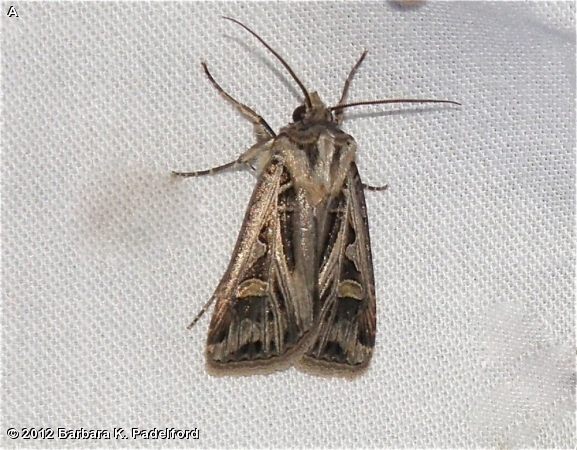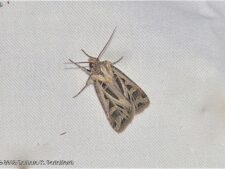
This moth has a wingspan of about 1.50 to 2 inches. The forewing is tan or gold with an intricate pattern of black markings. The reniform spot is often pale orange. The hindwing of the male is dirty white with dark gray veins and terminal band. The female’s hindwing is uniformly brownish-gray. The species is named for the larva which is smooth-skinned and light gray dorsally. There are four black dots of equal size on each abdominal segment. Ventrally, it is pale yellow.
The Dingy Cutworm Moth is common in Fontenelle Forest and Neale Woods. The adults fly from July to November and are attracted to artificial lights.
The larvae are generalist feeders which feed on more than 40 different plants. They include alfalfa, aster, chickweed, clover, corn, dock, flax, golden rod, garden vegetables, grasses, mullein, oats and plantain. The eggs are laid in fall. The larvae are present in fall and overwinter. The caterpillars continue feeding in spring to maturity and then tunnel underground to make a “plastered” cell where they remain for 2 to 5 months before pupating.
Disclaimer: The content of NatureSearch is provided by dedicated volunteer Naturalists of Fontenelle Forest who strive to provide the most accurate information available. Contributors of the images retain their copyrights. The point of contact for this page is: Babs Padelford.

